About who such a gray wolf, we know from good folk tales. How many have heard of an animal called the red wolf? Where does he live and how is he different from his gray relative?
Material Content:
Rare species description
The red wolf (Cuon alpinus), or as they are also called mountain dog, mountain wolf, Himalayan wolf, belongs to the predators of the canine family. This species is recognized as very rare, since these bright animals are the last surviving representatives of this family. In addition, animals are constantly balancing on the verge of gradual extinction.
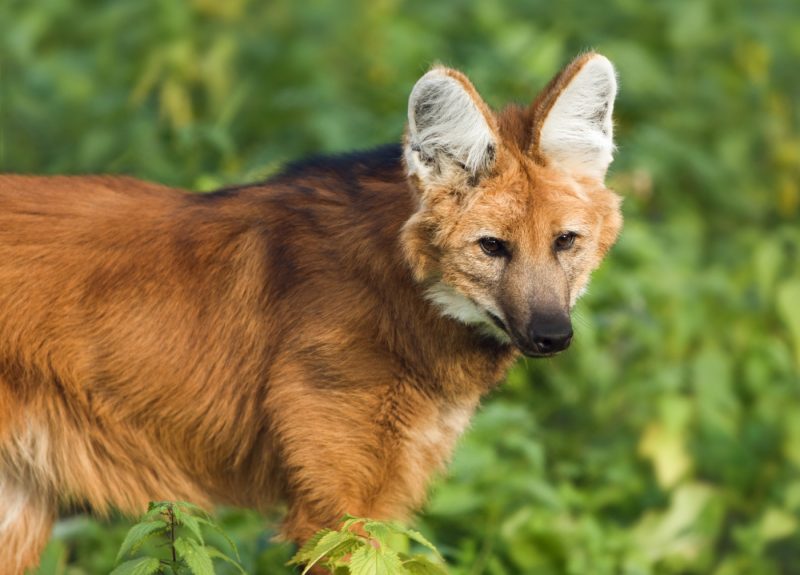
There are about 10 subspecies of animals, distinguished from each other by color, size and characteristics of the coat. At the same time, their main distinguishing feature is a reduced number of canines, offset by a large number of nipples - from 6 to 7 pairs.
It is interesting. Red wolves are significantly different from their counterparts - the ferocious heroes of children's tales - gray wolves. The tail of the red predators is longer, the ears are miniature. And, of course, an impressive fur-red coat with a yellowish tint stands out.
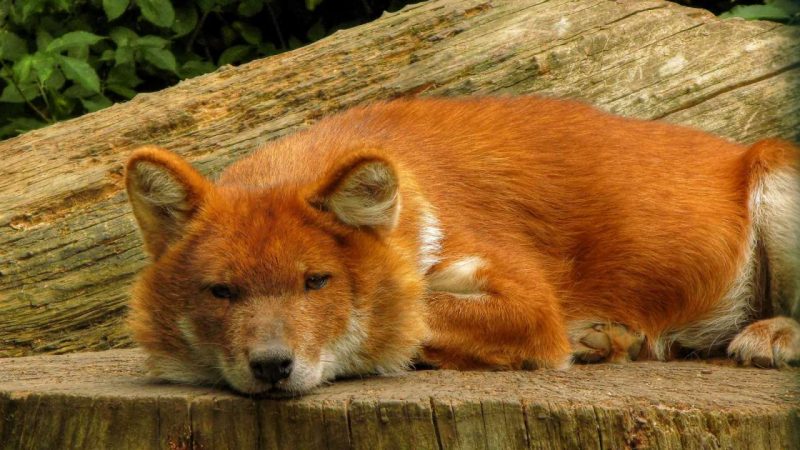
The red wolf is an animal in many ways surprising, at least with its appearance. In addition to the characteristic signs of the wolf, something from the fox and even from the jackal slips in it. At least the gorgeous red long tail resembles foxes very much. The animals are quite large - they can reach a length of 110 cm, the height at the withers sometimes reaches 50 cm. Males weigh an average of 15-20 kg, females - 10-13. The body of the predator ends with a pointed muzzle.
Having noticed from afar, it is easy to believe that the wolf is red, but in fact, the shade of its fur coat is copper-red.Although in terms of color, they may differ - shades can vary from rich brown to yellowish, depending on where the predators live. The magnificent coat reaches a length of about 15 cm and covers the body and upper part of the head. The chest and stomach of the wolf are white, as are the legs. The tail red at the base closer to its completion acquires a dark shade. In winter, the hair becomes several times longer than in summer, the hairs are brighter and more magnificent. Summer fur becomes rare and hard.
Features and habitat of the red wolf
Most often discussed individuals can be found in Central and South Asia, as well as on the islands of Sumatra or Java. In Russia, the habitat can be found in the Far East, where they wander from the expanses of Mongolia and China. For housing, they choose a mountainous area with a height not exceeding 4 km above sea level. The lairs of animals are arranged in crevices and caves. Southern wolves choose forests as their place of stay.
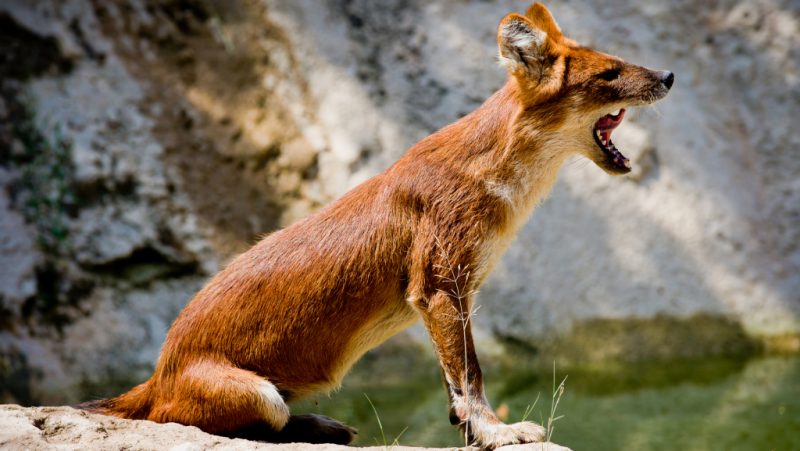
It is interesting. In the past, red wolves could be found in most of Russia. It is paradoxical, but at the moment it is not known for certain how many animals inhabit Russian natural zones today. There are simply no statistics on this. Once they lived in the Khabarovsk Territory, but now information about meetings with animals is not recorded here. It is known that the last mention was noted back in the 70s of the 20th century in the Primorsky Territory.
Character and lifestyle
Red dogs are collective animals that prefer to stay in packs. Such communities can include entire generations, including families of up to 12 individuals. Cell relationships are usually very friendly. Red wolves are very active creatures and I can lead a practically round-the-clock lifestyle.

Looking for prey in the bushes, wolves have a sharp smell, and at the same time have the ability to jump up to 3 meters. Hunting for them is also a collective matter - they go fishing in groups of 10-15 animals. Sly and tireless hunters patiently pursue the victim. Initially, predators line up in a living chain, creating an arc. Stepping on prey from different flanks, the wolves drive it into open places where the helpless animal has no choice but to surrender. Such collectivism helps predators in a few minutes to cope with the prey, exceeding their size many times over. Unlike other predators, the wolves of this subspecies do not dig into the throat of prey, but attack it from behind. The wolves begin to eat the defeated victim even before it is completely killed, while the speed of their meal is truly impressive.
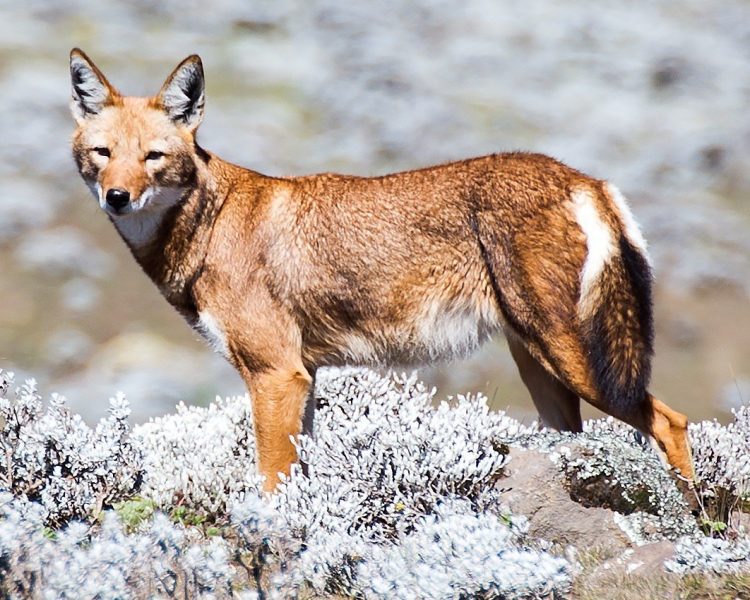
Trying to find food, red wolves can make long trips to completely unusual conditions, for example, steppes, forest-steppes, deserts.
Red Wolf Food
Red dogs often feed on large animals - red deer, roe deer, wild boars, in some cases domestic sheep, and sometimes they can be eaten by tigers and leopards. Wolves do not disdain small animals: marmots, rabbits, lizards.
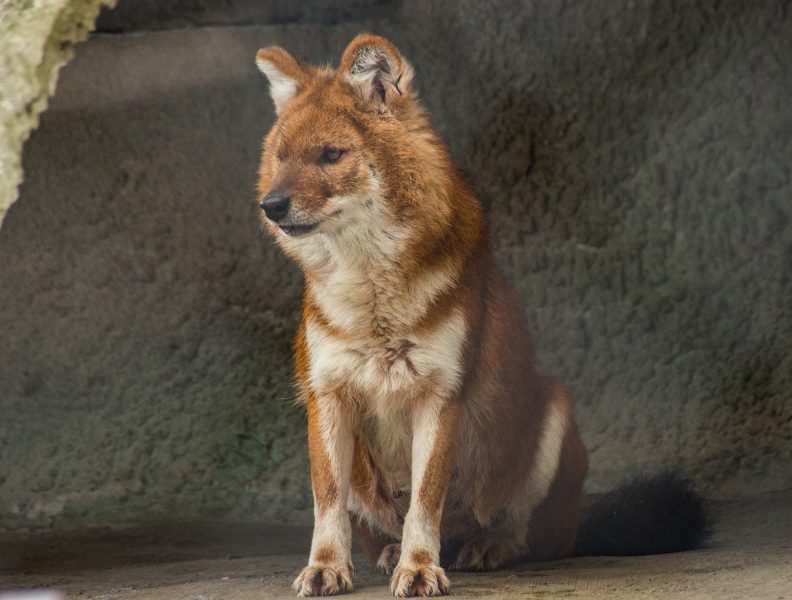
Note. Red-colored wolves are extremely fond of nutritious mountain rhubarb. With this plant, parents treat the young in the den.
Reproduction and longevity
Features of the breeding of red dogs have been studied insufficiently. It is only known that animals are surprisingly monogamous. Males actively educate the younger generation, not staying away from the process. In captivity, animals breed their offspring around January, and litter appears in April.

By the way, in India, small red puppies can be found year-round, but most often from January to February.
The female produces 5-9 blind brown wolf cubs that are not much different from young dogs. A week later, their eyes open.They reach the dimensions of the adult wolf at about 6 months, and at the end of the first year they become sexually mature.
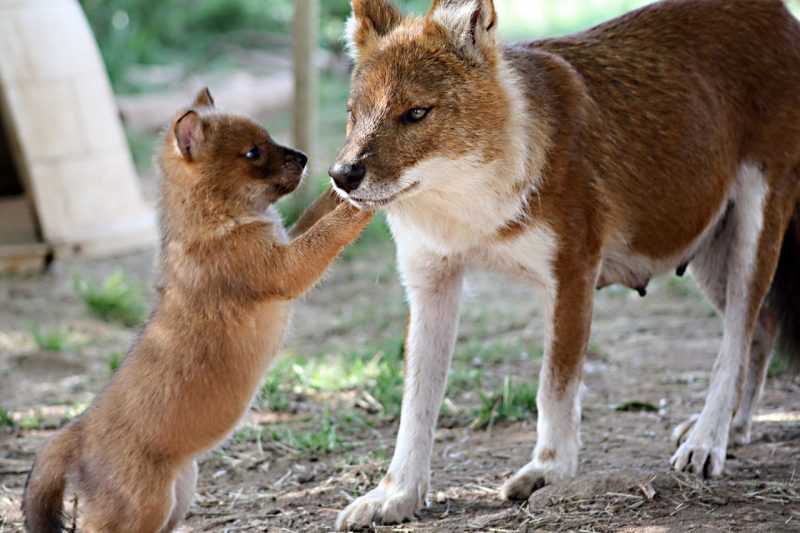
It is interesting. Red wolves actively breed in captivity. It is known that from a pair of animals caught in the north of China and brought to the Moscow zoo in 1958, 25 puppies appeared at different times.
It’s almost impossible to train animals. Under natural conditions, red wolves live for approximately 8 years.
Causes of Red Wolf Reduction
The main cause of extinction is recognized as competition with gray wolves, claiming a feed base. Also, red dogs are subject to persecution of a man who hunts, poisons and deprives them of food. Rabies and plague also do not contribute to an increase in the population. To date, in the wild, there are just over 2,000 of these animals.
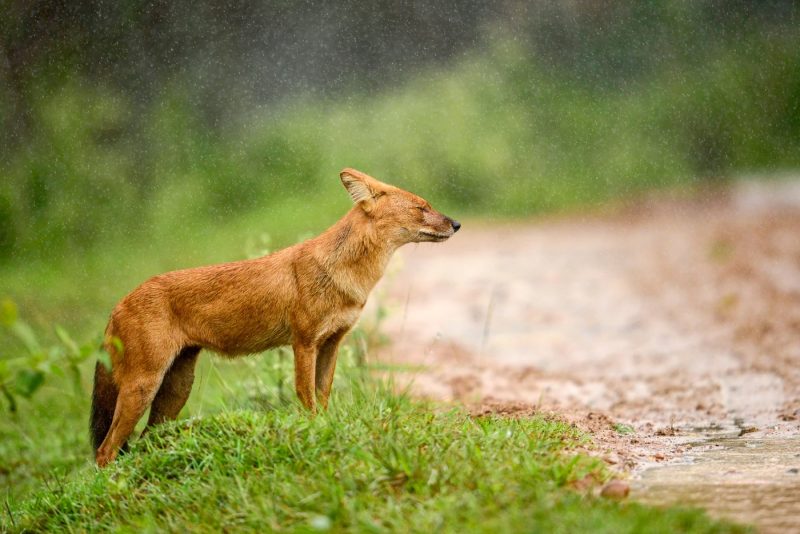
Mention of the scarcity of red wolves took place already in the 19th century. Modern red wolves are protected, being included in the international and Russian Red Books.

Magnificent fire wolves are a real decoration of nature. Unfortunately, due to the aggressiveness of man and gray wolves, their current number is small. In Russia, mention of the last encounters of humans with animals occurs in the middle of the last century.












